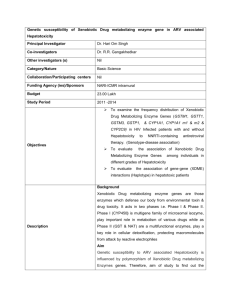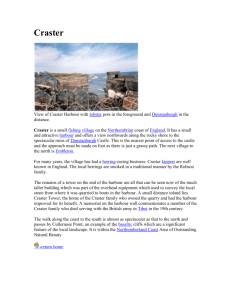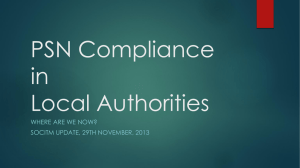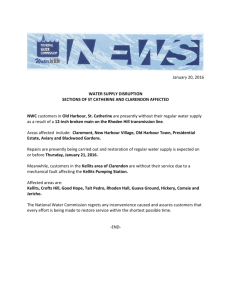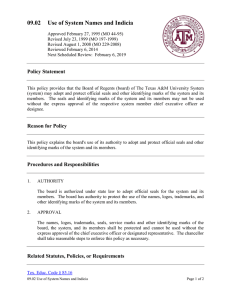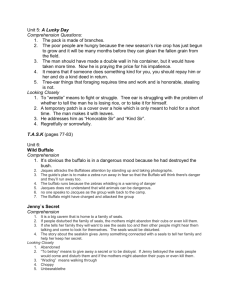Xenobiotic molecular biomarkers in harbour seals as proxies for
advertisement
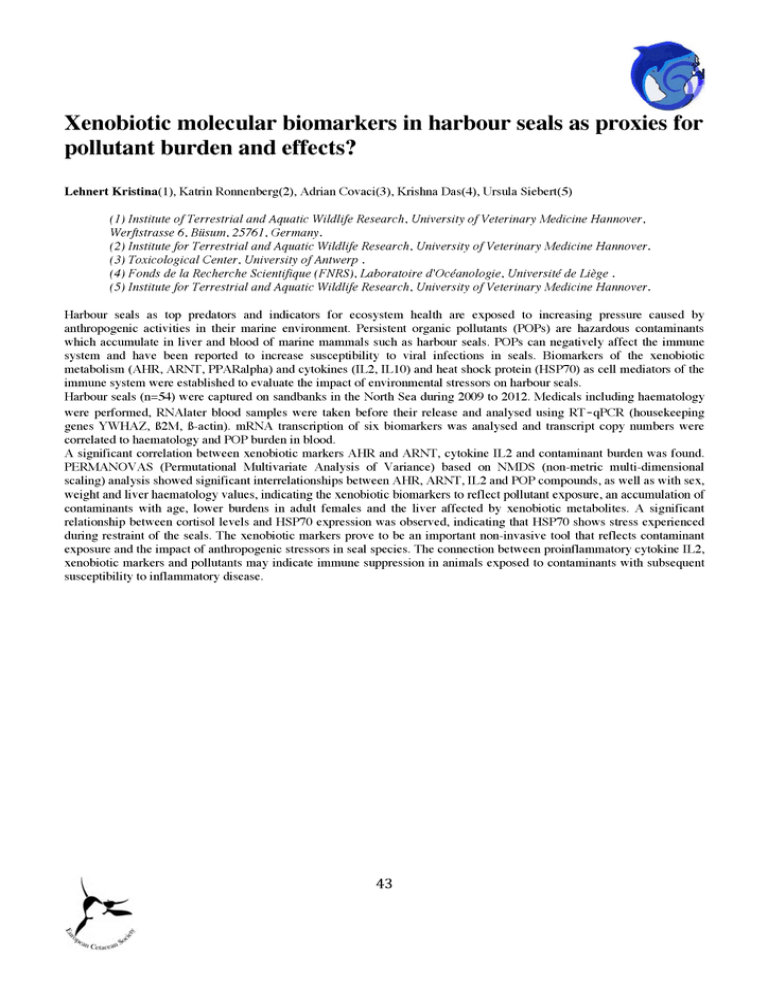
Xenobiotic molecular biomarkers in harbour seals as proxies for pollutant burden and effects? Lehnert K ristina(l), Katrin Ronnenberg(2), Adrian Covaci(3), Krishna Das(4), Ursula Siebert(5) (1) Institute o f Terrestrial a nd A quatic W ildlife R esearch, University o f V eterinary M edicine H annover, W erftstrasse 6, Biisum , 25761, G erm any. (2) Institute fo r Terrestrial a nd A quatic W ildlife R esearch, University o f Veterinary M edicine H annover. ( 3 ) Toxicological Center, University o f A ntw erp . (4) Fonds de la R echerche Scientifique (F N R S ), L aboratoire d'Oce'anologie, U niversité de Liège . (5) Institute fo r Terrestrial a nd A quatic W ildlife R esearch, University o f Veterinary M edicine H annover. Harbour seals as top predators and indicators for ecosystem healdi are exposed to increasing pressure caused by anthropogenic activities in their marine environment. Persistent organic pollutants (POPs) are hazardous contaminants which accumulate in liver and blood of marine mammals such as harbour seals. POPs can negatively affect die immune system and have been reported to increase susceptibility to viral infections in seals. Biomarkers of die xenobiotic metabolism (AHR, ARNT, PPARalpha) and cytokines (IL2, IL10) and heat shock protein (HSP70) as cell mediators of the immune system were established to evaluate die impact of environmental stressors on harbour seals. Harbour seals (n=54) were captured on sandbanks in the North Sea during 2009 to 2012. Medicals including haematology were performed, RNAlater blood samples were taken before their release and analysed using R T -qP C R (housekeeping genes YW HAZ, I.V2.\ I, ß-actin). mRNA transcription of six biomarkers was analysed and transcript copy numbers were correlated to haematology and POP burden in blood. A significant correlation between xenobiotic markers AHR and ARNT, cytokine IL2 and contaminant burden was found. PERMANOVAS (Pennutational Multivariate Analysis of Variance) based on NMDS (non-metric multi-dimensional scaling) analysis showed significant interrelationships between AHR, ARNT, IL2 and POP compounds, as well as with sex, weight and liver haematology values, indicating the xenobiotic biomarkers to reflect pollutant exposure, an accumulation of contaminants with age, lower burdens in adult females and the liver affected by xenobiotic metabolites. A significant relationship between cortisol levels and HSP70 expression was observed, indicating that HSP70 shows stress experienced during restraint of the seals. The xenobiotic markers prove to be an important non-invasive tool that reflects contaminant exposure and the impact of anthropogenic stressors in seal species. The connection between proinflammatory cytokine IL2, xenobiotic markers and pollutants may indicate immune suppression in animals exposed to contaminants with subsequent susceptibility to inflammatory disease. 43
